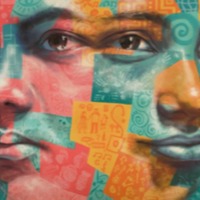
JH
There are an estimated 10,000 people living in modern slavery in Hong Kong (GSI 2018). Approximately 370,000 foreign domestic workers, primarily from Indonesia and the Philippines, work in Hong Kong; some become victims of forced labour in the private homes in which they are employed. An NGO report released in 2016 estimated as many as one in six foreign domestic workers is a victim of labour exploitation. Employment agencies often charge job placement fees in excess of legal limits, and sometimes withhold identity documents, which may lead to situations of debt bondage of workers in Hong Kong. The accumulated debts sometimes amount to a significant portion of the worker’s first year salary. Some employers or employment agencies illegally withhold passports, employment contracts, or other possessions until the debt is paid. Some workers are required to work up to 17 hours per day, experience verbal, sexual or physical abuse in the home, and/or are not granted a legally required weekly day off. JH, a 22-year-old woman trafficked from Malang to Hong Kong, ran away after two months because her employer physically assaulted her on multiple occasions.
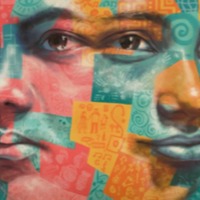
BL
There are an estimated 10,000 people living in modern slavery in Hong Kong (GSI 2018). Approximately 370,000 foreign domestic workers, primarily from Indonesia and the Philippines, work in Hong Kong; some become victims of forced labour in the private homes in which they are employed. An NGO report released in 2016 estimated as many as one in six foreign domestic workers is a victim of labour exploitation. Employment agencies often charge job placement fees in excess of legal limits, and sometimes withhold identity documents, which may lead to situations of debt bondage of workers in Hong Kong. The accumulated debts sometimes amount to a significant portion of the worker’s first year salary. Some employers or employment agencies illegally withhold passports, employment contracts, or other possessions until the debt is paid. Some workers are required to work up to 17 hours per day, experience verbal, sexual or physical abuse in the home, and/or are not granted a legally required weekly day off. BL, an Indonesian migrant domestic worker in Hong Kong
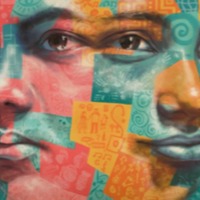
LL
There are an estimated 4,000 people living in modern slavery in Qatar (GSI 2018). Qatar is a destination country for men and women subjected to forced labour and, to a much lesser extent, forced prostitution. Men and women from Nepal, India, Pakistan, Bangladesh, the Philippines, Indonesia, Sri Lanka, Sudan, Kenya, Nigeria, Uganda, and other countries voluntarily migrate to Qatar as unskilled laborers and domestic workers, often paying illegal and exorbitant fees to unscrupulous recruiters in the labour-sending countries, thereby increasing their vulnerability to debt bondage. Some workers subsequently face conditions indicative of involuntary servitude, to include restricted movement, payment withholding, passport confiscation, exit permit retention, and threats of deportation or abuse. Individuals in Qatar sell visas to migrants and occasionally demand regular payments, enabling migrant workers to work illegally and without legal recourse against their respective sponsors, although reportedly this trend is on the decline. Contrary to what she was promised in her contract, 26-year-old LL had to wake up at 03:30 and work all day without proper breaks until 21:30 or 22:00.
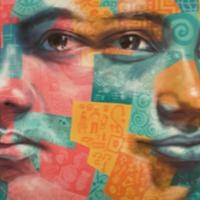
Rhadia
There are an estimated 85,000 people living in modern slavery in Yemen (GSI 2018). Young girls are subjected to child forced marriage, with UNICEF estimating 32% of girls being married before the age of 18. There is currently no legal age of marriage in Yemen and poverty, the practice of dowry and strict social and religious customs are drivers of child marriage in the country. With the onset of conflict within the country, estimates suggest that child marriage is on the rise. Rhadia was married at 16 and has lived with her husband and in-laws for over 8 years by whom she is physically abused.

Fatima
There are an estimated 85,000 people living in modern slavery in Yemen (GSI 2018). Young girls are subjected to child forced marriage, with UNICEF estimating 32% of girls being married before the age of 18. There is currently no legal age of marriage in Yemen and poverty, the practice of dowry and strict social and religious customs are drivers of child marriage in the country. With the onset of conflict within the country, estimates suggest that child marriage is on the rise. Fatima was married at 12 to a man in his late twenties. She lived in the same house with her husband’s mother, brothers, and sister.
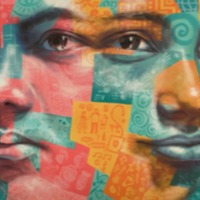
Su'ad
There are an estimated 85,000 people living in modern slavery in Yemen (GSI 2018). Young girls are subjected to child forced marriage, with UNICEF estimating 32% of girls being married before the age of 18. There is currently no legal age of marriage in Yemen and poverty, the practice of dowry and strict social and religious customs are drivers of child marriage in the country. With the onset of conflict within the country, estimates suggest that child marriage is on the rise. Su’ad was forced to marry when she was 14.
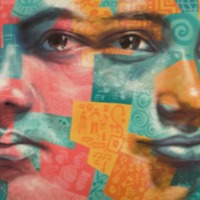
Madihah
There are an estimated 518,000 people living in modern slavery in Egypt, 465,000 in Sudan and an estimated 451,000 in Eritrea (GSI 2018). Since 2006 tens of thousands of Eritreans fleeing widespread human rights abuses and destitution have ended up in Egypt’s Sinai Peninsula. Until 2010, they passed through Sinai voluntarily and generally without any problems and crossed in to Israel. However, since then, Sudanese traffickers have kidnapped Eritreans in eastern Sudan and sold them to Egyptian traffickers in Sinai who have subjected at least hundreds to violence in order to extort large sums of money from their relatives. Madihah* defected from the Eritrean army and was kidnapped by smuggler at the Sudan border and then taken to Sinai. Madihah was subjected to physical and sexual abuse, and forced to work as a cleaner.
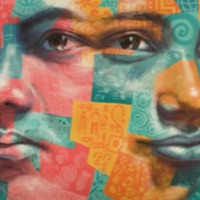
Negassi
There are an estimated 518,000 people living in modern slavery in Egypt, 465,000 in Sudan and an estimated 451,000 in Eritrea (GSI 2018). Since 2006 tens of thousands of Eritreans fleeing widespread human rights abuses and destitution have ended up in Egypt’s Sinai Peninsula. Until 2010, they passed through Sinai voluntarily and generally without any problems and crossed in to Israel. However, since then, Sudanese traffickers have kidnapped Eritreans in eastern Sudan and sold them to Egyptian traffickers in Sinai who have subjected at least hundreds to violence in order to extort large sums of money from their relatives. Negassi* was fleeing Eritrea when he was kidnapped by Smugglers in Sudan and transferred to Sinai. He was subjected to physical abuse and torture for a year until he paid their ransom.
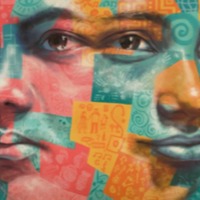
Saare
There are an estimated 518,000 people living in modern slavery in Egypt, 465,000 in Sudan and an estimated 451,000 in Eritrea (GSI 2018). Since 2006 tens of thousands of Eritreans fleeing widespread human rights abuses and destitution have ended up in Egypt’s Sinai Peninsula. Until 2010, they passed through Sinai voluntarily and generally without any problems and crossed in to Israel. However, since then, Sudanese traffickers have kidnapped Eritreans in eastern Sudan and sold them to Egyptian traffickers in Sinai who have subjected at least hundreds to violence in order to extort large sums of money from their relatives. Saare*, a 20-year old Eritrean man said fled Eritrea on November 15, 2011 with a friend. He tells of how Sudanese police handed him and his group over to traffickers who transferred them to Sinai. In Sinai, other traffickers held and abused them and dozens of other Eritreans for almost three months, including by raping women
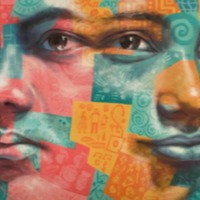
Sheshy
There are an estimated 518,000 people living in modern slavery in Egypt, 465,000 in Sudan and an estimated 451,000 in Eritrea (GSI 2018). Since 2006 tens of thousands of Eritreans fleeing widespread human rights abuses and destitution have ended up in Egypt’s Sinai Peninsula. Until 2010, they passed through Sinai voluntarily and generally without any problems and crossed in to Israel. However, since then, Sudanese traffickers have kidnapped Eritreans in eastern Sudan and sold them to Egyptian traffickers in Sinai who have subjected at least hundreds to violence in order to extort large sums of money from their relatives. Sheshy*, a 17-year-old boy from Eritrea’s capital, Asmara fled to Hafir in Sudan in August 2011 where “Rashaida men” kidnapped and transferred him to traffickers in Sinai who abused him for eight months until his relatives paid $13,000.
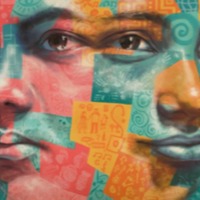
Isaias
There are an estimated 518,000 people living in modern slavery in Egypt, 465,000 in Sudan and an estimated 451,000 in Eritrea (GSI 2018). Since 2006 tens of thousands of Eritreans fleeing widespread human rights abuses and destitution have ended up in Egypt’s Sinai Peninsula. Until 2010, they passed through Sinai voluntarily and generally without any problems and crossed in to Israel. However, since then, Sudanese traffickers have kidnapped Eritreans in eastern Sudan and sold them to Egyptian traffickers in Sinai who have subjected at least hundreds to violence in order to extort large sums of money from their relatives. Isaias* was kidnapped by Egyptian traffickers in the Sinai Peninsula in early 2012.

Juana
There are an estimated 403,000 people living in conditions of modern slavery in the United States (GSI 2018). The US attracts migrants and refugees who are particularly at risk of vulnerability to human trafficking. Trafficking victims often responding to fraudulent offers of employment in the US migrate willingly and are subsequently subjected to conditions of involuntary servitude in industries such as forced labour and commercial sexual exploitation. Juana first travelled from the Philippines to Kuwait in 1985 where she was subjected to domestic slavery. Locked in her employer’s house and unable to communicate with her family. From here, Juana’s ex-husband’s sister helped her leave Kuwait and travel to the United States. Here she became a domestic worker where she suffered withholding of pay and unfair dismissal. With the help of a local grassroots organisations, Juana was able to win back her unpaid wages and now works with the organisation to help other domestic workers in the US.
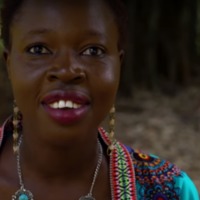
Sophie (Narrative 2)
There are an estimated 328,000 people living in conditions of slavery in Kenya (GSI 2018). Men, women and children are subjected to exploitation amounting to modern slavery in forced labour and sex trafficking. Children are often subjected to forced labour in domestic service, agriculture, fishing, cattle herding, street vending and begging. They are also victims of commercial sexual exploitation throughout the country, in khat cultivation areas, near gold mines and along the highway and Lake Victoria. Moreover, those residing in Kenya's largest refugee camp Dadaab are often vulnerable. Men and women are often lured by employment agencies offering attractive job opportunities, then find themselves trapped in domestic servitude, massage parlors and brothels or forced manual labour. Sophie B went to live with her Uncle after her father lost his job. Rather than taking Sophie to school as he had promised, her Uncle forced her to work as a domestic in his house. She was forced to care for her cousins and do all the house work, being subjected to physical abuse daily.
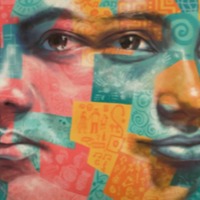
Anna C
There are an estimated 136,000 people living on conditions of modern slavery un the United Kingdom (Global Slavery Index 2018). According to the 2017 annual figures provided by the National Crime Agency, 5, 145 potential victims of modern slavery were referred through the National Referral Mechanism in 2017, of whom 2,454 were female, 2688 were male and 3 were transgender, with 41% of all referrals being children at the time of exploitation. People are subjected to slavery in the UK in the form of domestic servitude, labour exploitation, organ harvesting and sexual exploitation, with the largest number of potential victims originating from Albania, China, Vietnam and Nigeria. This data however does not consider the unknown numbers of victims that are not reported. Anna was living in Albania when she ran away with her boyfriend to escape an arranged marriage. She travelled to Kosovo where she thought she would build a life with the man she loved. However, instead Anna was forced in to a room, locked up and was repeatedly raped by up to ten men a day. Anna was moved from place to place, never knowing where she was. She was finally able to escape while in England and was referred to Hestia.
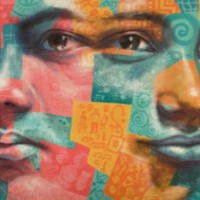
Tika
There are an estiamted 403,000 people living in modern slavery in the United States. Sex trafficking exists throughout the country. Traffickers use violence, threats, lies, debt bondage and other forms of coercion to compel adults and children to engage in commercial sex acts against their will. The situations that sex trafficking victims face vary, many victims become romantically involved with someone who then forces them into prostitution. Others are lured with false promises of a job, and some are forced to sell sex by members of their own families. Victims of sex trafficking include both foreign nationals and US citizens, with women making up the majority of those trafficked for the purposes of commercial sexual exploitation. In 2015, the most reported venues/industries for sex trafficking included commercial-front brothels, hotel/motel-based trafficking, online advertisements with unknown locations, residential brothels, and street-based sex trafficking. Tika ran away from home at 12 years old. She was kidnapped, beaten, raped and sold for days. After this experience Tika remained on the streets, being forced to prostitute herself by a pimp. It was after being badly beaten by her pimp at 18 years old that she was finally able to leave her situation.
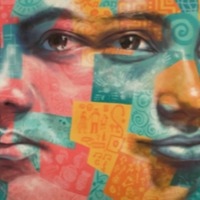
Maya C
There are an estimated 403,000 people living in conditions of modern slavery in the Unites States. Sex trafficking is a form of modern slavery that exists throughout the US. Traffickers use violence, threats, lies, debt bondage and other forms of coercion to compel adults and children to engage in commercial sex acts against their will. The situations that sex trafficking victims face vary, many victims become romantically involved with someone who then forces them into prostitution. Others are lured with false promises of a job, and some are forced to sell sex by members of their own families. Victims of sex trafficking include both foreign nationals and US citizens, with women making up the majority of those trafficked for the purposes of commercial sexual exploitation. In 2015, the most reported venues/industries for sex trafficking included commercial-front brothels, hotel/motel-based trafficking, online advertisements with unknown locations, residential brothels, and street-based sex trafficking. Maya tells of the sexual abuse she suffered as a child and how her subsequent addiction to drugs led her in to a life of prostitution. Maya was forced Maya was forced by people, including her boyfriend to prostitute herself in order to obtain drugs. Maya recalls how a group of men locked her in a room filled with dog faeces, put a collar and beat her. After being locked up for 3 days she was finally able to escape and is now sober.
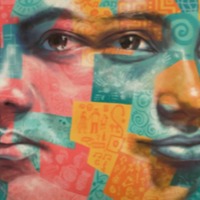
Gideon
There are an estimated 133,000 people living in modern slavery in Ghana (GSI 2018). Ghana remains a source, transit, and destination country for men, women, and children subjected to forced labor and sex trafficking. Ghanaian boys and girls are subjected to forced labor within the country in fishing, domestic service, street hawking, begging, portering, artisanal gold mining, quarrying, herding, and agriculture, including cocoa. Research focused on the fishing industry on Lake Volta indicated that more than half of the children working on and around the lake were born in other communities and many of these children are subjected to forced labor; not allowed to attend school; given inadequate housing and clothing; and are controlled by fishermen through intimidation, violence, and limiting access to food. Boys as young as five years old are forced to work in hazardous conditions, including deep diving, and many suffer waterborne infections. Gideon’s grandparents sent him to a man who promised to take care of him and help him go to school. Instead, the man enslaved Gideon in a fishing boat on Lake Volta in Ghana.
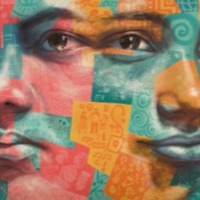
Gowri
There are an estimated almost 8 million people living in modern slavery in India (GSI 2018). India has a population of more than 1.3 billion people, with at least 270 million people still living on less than US$1.90 per day. Existing research suggests that all forms of modern slavery continue to exist in India, with forced labour, including debt bondage, constituting India’s largest trafficking problem. Situations of debt bondage are often aggravated by the need to raise emergency funds or take on loans for health crises. Sometimes entire families are forced to work in brick kilns, rice mills, embroidery factories and agriculture. Gowri and her husband wanted to support their children and pay for their medical bills, so they took out a loan from a factory owner, agreeing to work in his brick kiln and wood-cutting facility to pay off the debt. This turned out to be a trick, and the owner continually increased the loan, violently forcing the family to continue working long hours for him. Even when Gowri paid of her debt and tried to leave to find a safer workplace, her employer attacked her. This abuse continued for nearly 10 years, until IJM was able to send rescue. Today, the slave owner is standing trial, and the family is safe.
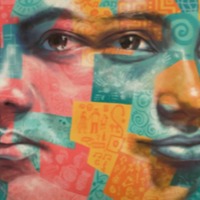
Pandit
The Global Slavery Index 2018 estimates that on any given day there were nearly 8 million people living in modern slavery in India. While the bonded labour system is formally abolished and criminalised, recent research indicated that bonded labour is still prevalent in India. A 2016 report found that in the state of Tamil Nadu, 351 of 743 spinning mills used bonded labour schemes, otherwise known as Sumangali schemes. Similarly in granite quarries, wage advances and loans with an interest ranging from 24% to 36% are used to bond workers. Situations of debt bondage are often aggravated by the need to raise emergency funds or take on loans for health crises. Pandit is a third generation bonded labourer after inheriting his family’s debt. Pandit tells of how he was subjected to physical abuse from his landlord who was never happy with the work he did and that the police did not take complaints seriously. Now out of bonded labour for 18 years, Pandit does not want to go back.
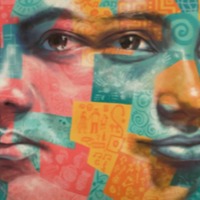
Atal
The Global Slavery Index 2018 estimates that on any given day there were nearly 8 million people living in modern slavery in India. While the bonded labour system is formally abolished and criminalised, recent research indicated that bonded labour is still prevalent in India. A 2016 report found that in the state of Tamil Nadu, 351 of 743 spinning mills used bonded labour schemes, otherwise known as Sumangali schemes. Similarly in granite quarries, wage advances and loans with an interest ranging from 24% to 36% are used to bond workers. Situations of debt bondage are often aggravated by the need to raise emergency funds or take on loans for health crises. Atal works as a bonded labourer in Uttar Pradesh. He tells of the difference between his and his father’s time, the restrictions placed on him due to his caste and how it is almost impossible to ever pay off borrowed debt. He also tells of how he once stood for election in his community in an attempt to obtain justice for bonded labourers.